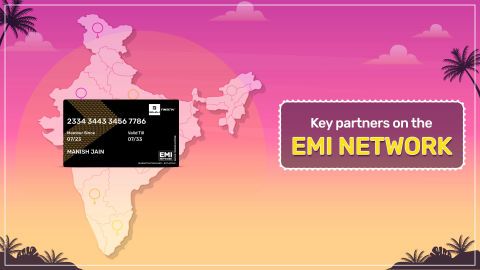QLED stands for Quantum-dot Light Emitting Diode. These TVs use quantum dots to improve brightness and colour performance. A QLED TV still uses LED backlighting, but the quantum dot layer enhances light and colour output. As a result, QLED TVs deliver sharper images, better contrast, and more lifelike colours. They are especially useful in rooms with natural light, as they remain bright and clear even in daylight. Many brands offer 4K or 8K QLED TVs with smart features, voice assistants, and HDR support. If you enjoy detailed visuals and cinematic colours, a QLED TV is a good choice.
What is LED TV
An LED TV is a type of LCD television that uses light-emitting diodes for backlighting. It is a common and budget-friendly option for everyday use. LED TVs offer good picture quality, decent brightness, and are available in many sizes and models. While they do not have the advanced colour layer of QLEDs, LED TVs are reliable for regular viewing like news, sports, and shows. They also use less power than older technologies like plasma. If you want a screen that performs well for basic entertainment needs, an LED TV is a solid and affordable option.
LED TVs vs QLED TVs: What is the difference
When shopping for a new television, you might come across the terms QLED and LED. But what do they really mean and how are they different? LED TVs use a backlight to illuminate the screen, providing a bright and clear picture. QLED TVs, on the other hand, use a quantum dot layer to enhance colour and contrast, giving you a more vibrant viewing experience. While both types offer stunning visuals, QLED TVs generally provide richer colours and deeper blacks, making them ideal for movie enthusiasts. Understanding these differences can help you choose the right television for your home entertainment needs.
Key features of QLED vs LED TVs
Brightness: QLED TVs tend to be brighter than LED TVs, making them perfect for rooms with a lot of natural light. LED TVs, while bright, may not match the peak brightness levels of QLEDs.
Contrast: LED and 4K LED TVs utilise dimming zones to produce deeper blacks, but QLED TVs offer superior contrast ratios. This results in a more immersive viewing experience, especially during darker scenes.
Viewing angles: LED TVs often have narrower viewing angles, which means the picture quality can suffer when viewed from the side. QLED TVs offer wider viewing angles, ensuring a clearer picture from different positions.
Comparison table: QLED vs LED TV technologies
Feature
|
QLED TV
|
LED TV
|
Colour Quality
|
Superior, vibrant colours
|
Good, but not as vibrant as QLED
|
Brightness
|
Higher peak brightness
|
Moderate brightness
|
Contrast
|
Better contrast with deeper blacks
|
Good contrast with local dimming
|
Viewing Angles
|
Wide viewing angles
|
Narrower viewing angles
|
Price
|
Generally more expensive
|
More affordable options available
|
If you are interested in a 43 inch LED TV, it offers the perfect mix of size and performance for medium-sized rooms. This compact TV often supports 4K resolution and smart features, delivering sharp visuals and easy streaming without taking up too much space.
What is the difference between QLED and LED TVs in real use
In real-world use, the difference between QLED and LED TVs comes down to brightness, colour accuracy, and overall viewing experience. LED TVs are affordable and reliable, offering decent picture quality for everyday viewing, but they can struggle with contrast and colour richness.
QLED TVs, enhanced with quantum dot technology, deliver brighter visuals, more vibrant colours, and better HDR performance, making them ideal for well-lit rooms and immersive entertainment. While LED suits budget-conscious buyers, QLED provides a more premium experience with sharper detail and enhanced realism, especially noticeable when watching movies, sports, or playing games.
Updated price list of popular QLED and LED TVs in India – (November 2025)
Model name
|
Price
|
Description
|
LG 80 cm (32 inches) HD Ready Smart LED TV 32LQ643BPTA (Black)
|
Rs. 14,490
|
Compact LED TV with smart features and HD Ready resolution for everyday use.
|
Xiaomi 108 cm (43 inches) X Pro QLED Series Smart Google TV
|
Rs. 34,999
|
QLED display with Google TV, vibrant colours, and Dolby Vision support.
|
Samsung 108 cm (43 inches) D Series Brighter Crystal 4K Dynamic Ultra HD Smart LED TV
|
Rs. 41,990
|
Ultra HD LED TV with Crystal Processor 4K and dynamic contrast enhancement.
|
Samsung 138 cm (55 inches) 4K Ultra HD Smart QLED TV
|
Rs. 49,999
|
Large-screen QLED TV with stunning 4K clarity, vivid colours, and voice control.
|
Disclaimer: The features, availability, and pricing of each model are subject to change and may vary. For the most accurate and up-to-date information, please visit the official website.
Note: You can use Bajaj Finserv’s financing options to split any purchase above Rs. 5,000 into Easy EMIs.
Before you decide, explore the latest offers. You may find a great deal on a model that matches your needs.
QLED or LED: Which TV is best for your viewing experience
Deciding between a QLED and an LED TV ultimately depends on your specific needs and viewing environment. If you're a movie enthusiast or a gamer looking for the best possible picture quality, QLED TVs might be your best bet. They offer superior colour accuracy, enhanced brightness, and better contrast, making them ideal for dark rooms or home theatres. On the other hand, if you're looking for a more budget friendly option without compromising too much on quality, an LED TV can still offer an impressive viewing experience.
LED TVs have come a long way in terms of picture quality and often include features like HDR and 4K resolution, making them a great choice for everyday TV viewing. If you're looking for something versatile, like a 55-inch LED TV for your living room. Remember, the best TV for you will depend on your personal preferences, room lighting, and how you plan to use the TV.
Get TVs on Easy EMIs with Bajaj Finserv
Bringing home a high-performance TV is now simple with Bajaj Finserv’s flexible financing options. Follow these easy steps to buy your preferred TV on Easy EMIs.
Explore models on Bajaj Mall: Browse through a wide range of LED, QLED, OLED, and smart TVs on Bajaj Mall. Compare screen sizes, resolutions, sound quality, and smart features to choose the model that suits your home viewing needs.
Visit a partner store: Once you have shortlisted a model, visit any of Bajaj Finserv’s 1.5 lakh partner stores across 4,000 Indian cities. See the product in person and speak to experts if needed before finalising your purchase.
Choose the Easy EMI Loan option: At checkout, select the Bajaj Finserv Easy EMI Loan. Get financing of up to Rs. 5 lakh and convert your TV purchase into Easy EMIs. Some TV models may also be available with zero down payment.
Check your loan eligibility online: To make your shopping experience smoother, check your pre-approved loan limit by entering your mobile number and OTP. This gives you a clear idea of how much you can borrow before visiting the store.
Use the EMI Network Card for purchases up to Rs. 3 lakh: If you have a Bajaj Finserv EMI Network Card, use it to divide purchases of up to Rs. 3 lakh into monthly instalments—no paperwork, no delays.
TV by brand
TV by features
TV by size
TVs by brands
TVs by budget









